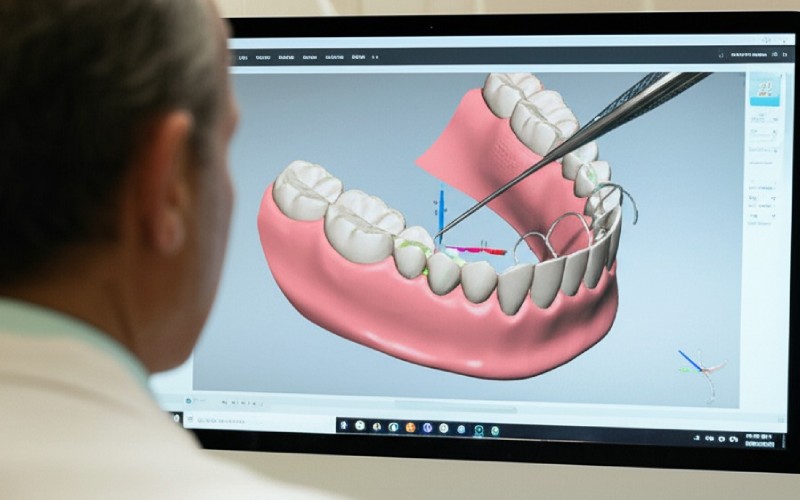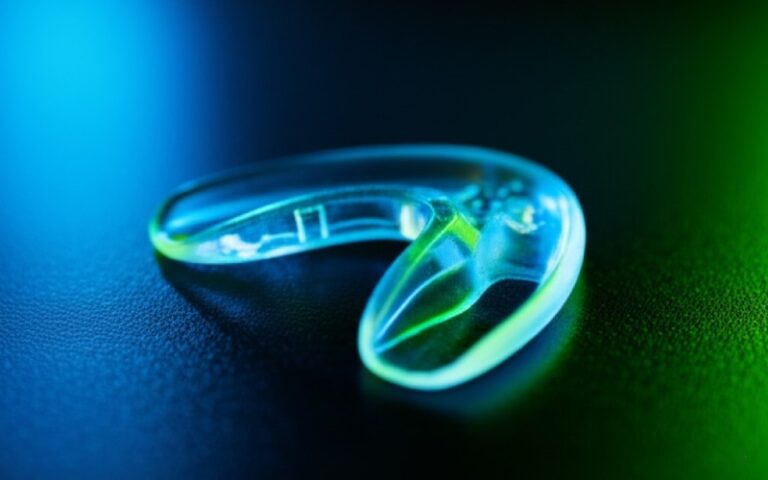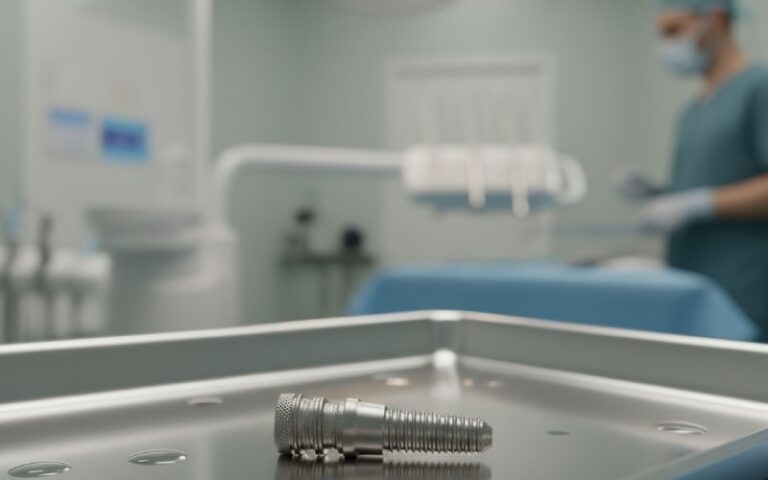
When Should Dentists Choose Flexible Partial Dentures? A Guide to Improving Patient Outcomes
As a dentist, I’m always looking for the best ways to help my patients who have missing teeth. For many years, regular stiff dentures were the main choice. But now, changes in dental materials have given us a great new option: flexible partial dentures. These new dentures offer a special mix of comfort, good looks, and usefulness that can really make a patient’s life better. This article will be your full guide to knowing when and why you should think about flexible partial dentures for your patients. We will look at the different materials, the best type of patient for them, and how they compare to other choices. This will give you the certainty you need to pick the right treatment to change your patient’s smile.
Table of Contents
What Exactly Are Flexible Partial Dentures and What Materials Are Used?
Unlike regular dentures made from stiff acrylic or metal, flexible dentures are made from a bendable, heat-sensitive material. This lets them mold to the natural shape of a patient’s mouth, giving a more comfortable and snug fit. The most used material is a kind of nylon resin, like Valplast, but other choices like Duraflex, which is an ethylene-propylene material, and different thermoplastic resins are also out there. These materials are light, safe for the body, and often don’t cause allergies, making them a great choice for patients who are sensitive to acrylic or metal.
The design of a flexible denture is also very different. They don’t need metal clasps to hold them in. Instead, they use thin, gum-colored parts that softly hold onto the natural teeth and gums. This gives them support without the bad look of metal. This feature by itself is a big plus for patients who worry about how their smile looks. The material’s flexibility also means the denture is less likely to break if it’s dropped by accident, which is a common problem with stiffer options. The process to make these dentures has also been made more efficient, often meaning you get them back from the lab faster.

How Do Flexible Partial Dentures Compare to Traditional Acrylic and Titanium Options?
When a patient is missing teeth, dentists have a few different types of partial dentures to think about. The usual choices are acrylic partial dentures and cast metal partials, which can be made from metals like cobalt-chrome or titanium. While these have been the main choice for years, flexible partial dentures have some clear benefits. Next to acrylic dentures, flexible ones are smaller and more comfortable. Acrylic dentures can break more easily and often need to be made thicker to be strong, which some patients find bulky and uncomfortable.
When comparing flexible dentures to cast metal partials, the main difference is the framework. Metal frameworks, especially those made of titanium, are strong and give great support. But, the metal clasps can be seen and can bother some patients. Flexible dentures don’t have metal, so they get rid of these problems and are a great choice for patients with metal allergies. A flexible partial is strong because it fits so well against the tissue. A cast metal partial gets its strength from its stiff framework. While a metal partial might fit more tightly in some situations, the comfort and good looks of a flexible denture often make it the better choice for many patients.
Who is the Best Patient for a Flexible Denture?
Picking the right person is key for any dental treatment to work well, and flexible partial dentures are no different. The best patient for a flexible denture is usually someone missing one or more teeth who wants a comfortable solution that looks good. They are a great choice for patients who have teeth that are tilted, gums with uneven bone, or can’t open their mouth very wide, as the flexible material can easily work with these issues. They are also a great pick for patients with allergies to acrylic or metal.
But, it is not a solution that works for everyone. A patient’s general oral health is a big thing to consider. People with good oral hygiene and healthy teeth and gums that are left are better fits. If a patient has a lot of bone loss or bad gum disease, a flexible denture might not give enough support. It’s also important to set the right expectations with the patient. While flexible dentures have many good points, they may not be right for patients who need a more permanent or stiff solution for many missing teeth. A good talk with the patient about their life, budget, and what they want for their smile will help figure out if a flexible partial denture is the best way to fix their smile.
What Are the Benefits for the Patient’s Looks and Comfort?
For a patient, the two biggest good points of flexible partial dentures are comfort and looks. I’ve had many patients tell me how much more comfortable their new flexible denture is than their old, stiff one. The soft material shapes to their mouth, causing less rubbing and fewer sore spots that often happen with regular dentures. Because they are so light, it also takes much less time to get used to them.
The benefit to their appearance is just as strong. The material is partly see-through and can be made in different colors to match the patient’s natural gum tissue perfectly. Not having metal clasps is a huge plus for many, as it gets rid of the “metal mouth” look that can make people feel shy about their smile. Being able to create a natural-looking replacement for missing teeth can make a big difference in a patient’s confidence and how they feel overall. To them, it’s not just a denture; it’s a way to transform their smile and feel good about themselves again.
Can Digital Dentistry Make the Flexible Denture Process Better?
The start of digital dentistry has completely changed many parts of our job, and making flexible partial dentures is one of them. The old way of using physical molds can now be switched with a more accurate and comfortable digital process. By using an intraoral scanner, we can make a very exact 3D model of the patient’s mouth. This digital mold gives the lab the perfect information it needs to design and make a flexible partial denture with amazing accuracy.
This digital way of working has several benefits. For the patient, it means a more comfortable time in the chair, as they don’t have to deal with gooey mold materials anymore. For the dentist and the lab, it means a faster and more accurate process, with less need for changes and remakes. Being able to design the denture on a computer leads to a result you can count on and better talk between the doctor and the technician. As this technology gets better, I believe the digital making of flexible dentures will become the normal way, making this great treatment option even better and easier to get.
What are the Downsides of Flexible Partial Dentures?
One of the main problems is that they are not as strong as metal-based options. This makes them not as good for cases where many teeth are missing or for patients who bite down very hard. Another thing to think about is how long they last. While they are tough, they might not last as long as a cast metal partial and may need to be replaced sooner.
Another possible problem is that the flexible material can get stained and gather germs more easily if not cleaned the right way. This makes teaching the patient about good oral hygiene and denture care even more important. It’s also good to know that making changes and repairs to flexible dentures can be harder than with regular dentures. In some cases, if a tooth needs to be added to the partial, you might have to get a whole new one. Knowing about these downsides helps to have a better talk with the patient and helps to prevent them from being unhappy later on.
How Do I Pick the Right Flexible Partial for a Patient’s Case?
With a few different types of flexible partial dentures out there, the choice should be based on what each patient needs. Materials like Valplast, a nylon-based resin, are known for being very flexible and looking natural. Duraflex, made from an ethylene-propylene material, gives a good mix of flexibility and strength. For patients with allergies, you should choose a material that doesn’t cause them. Where the missing teeth are and how many are missing will also help decide on the design and material.
For instance, for a patient missing one tooth where it can be seen, a small, flexible partial can be a great and simple choice. In cases with a longer line of missing teeth, a mix of a metal frame for stiffness with flexible clasps for looks and comfort might be the best answer. The important thing is to check the patient’s mouth well, talk about what they expect, and then use what you know about the materials to pick the best and most effective treatment. This way of picking for each case makes sure you are giving the best possible result for every person.

What Advice Should I Give My Patients About Their New Denture?
After a patient gets their new flexible partial denture, it’s my job as their dentist to give them clear and full advice on how to take care of it. I always explain that good care is key for the denture to last a long time and for their general oral health. This includes instructions on how to clean the denture right, as well as their other natural teeth and gums, to stop plaque from building up and prevent gum disease. I suggest special cleaners made for flexible dentures, because rough cleaners can hurt the material.
I also make sure to talk about what to expect when they first start wearing it. Even though flexible dentures are usually more comfortable, there can still be a short time of getting used to them. I explain what foods to stay away from at first and when they should come back to the office for any needed changes. It’s very important to give the patient the information they need to feel sure and comfortable with their new denture and to keep up with great oral hygiene.
Are There Times When Dental Implants Are a Better Choice?
While flexible partial dentures are a great pick for many, there are times when dental implants might be a better long-term answer. Dental implants give a permanent and very steady replacement for missing teeth, and they can help keep the bone in the jaw. For a patient who wants an option that needs little care and feels natural, and who is healthy enough for surgery, dental implants are often the best way to go.
But, not everyone can get dental implants because of things like not enough bone, certain health problems, or cost. Flexible partial dentures can be a great choice in these cases, giving a useful and nice-looking solution without needing surgery. Sometimes, a flexible partial can even be used as a short-term fix while a patient is healing after a tooth is pulled or is saving money for a more permanent choice like an implant. The key is to have an open talk with the patient about all their treatment choices and help them pick the one that best fits their own needs and situation.
What is the Best Way to Add Flexible Dentures to My Practice?
Adding flexible partial dentures to your practice can be an easy and good process. The first step is to learn about the different kinds of flexible materials and when to use each one. It is also very important to build a good relationship with a quality dental lab that is an expert in making flexible partials. A good lab can give you help on picking materials and on design, making sure the final product is high-quality.
Offering flexible dentures as a treatment choice can greatly improve your ability to meet the different needs of your patients. It lets you provide a comfortable, good-looking, and metal-free choice instead of regular partials. By clearly telling patients about the benefits of flexible dentures and picking the right cases with care, you can make patients happier and get great results. This modern way to replace teeth is a great thing to add to any dental practice that wants to give the best care possible.
Key Takeaways:
- Flexible partial dentures are a comfy and good-looking choice instead of old-style stiff dentures.
- They are usually made from a bendable, heat-sensitive material like nylon resin, which is light and often does not cause allergies.
- The best patients for flexible dentures are those with good oral health who are missing teeth and want a metal-free, comfortable option.
- Not having metal clasps and looking like natural gums are big pluses for appearance.
- Digital dentistry and intraoral scanning can make the process for creating flexible dentures better and more exact.
- Downsides include being less strong than metal partials and the chance of staining if not cared for well.
- Choosing the right cases and teaching patients about good oral hygiene are key for good results.
- Flexible dentures can be a great choice for patients who cannot get dental implants.




